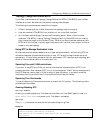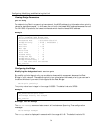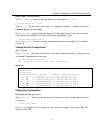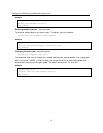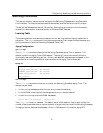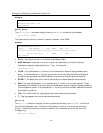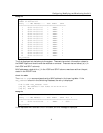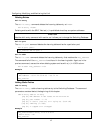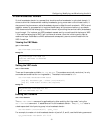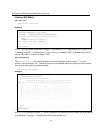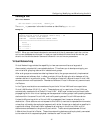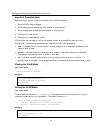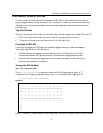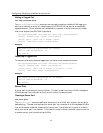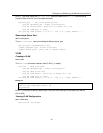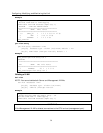
Configuring, Modifying, and Monitoring the Unit
43
Virtual Broadcast Domain
Virtual broadcasts domain is a concept that tends to confine broadcasts in a physical domain, it
allows to diminish the bandwidth used by broadcasts, giving more room to the unicast traffic, it
also prevent the phenomenon called broadcasts storms to affect the entire network. VBC are not
made for a security purposes but to improve the efficiency of the communications in a network.
VBC disconnect entities belonging to different domain by avoiding the service traffic (broadcasts)
to go through. For instance, an ARP broadcast request sent by a machine which belongs to VBC
1 to a machine belonging to VBC 2 will not have an answer, thus the initiating entity cannot
resolve the layer 3 address to a MAC address and consequently cannot communicate with the
VBC 2 machine.
Viewing the VBC Mode
get-vlan-mode
get-vlan-mode {run|nvram}
Example
SYS_console>get-vlan-mode run
Runtime VLAN mode is disabled
SYS_console>
Setting the VBC mode
set-vlan-mode
There are three modes available:
vbc
,
tag,
or
none
. The modes are mutually exclusive (i.e. only
one mode can be defined for running session). The default value mode is
none
.
set-vlan-mode <database><VLAN state>
[arg #0] database type - either {run|nvram|all}
[arg #1] VLAN state: either {vbc|tag|none}
Example
SYS_telnet>set-vlan-mode run vbc
Set run VLAN mode vbc- OK
Creating VBC Domains
set-vbc-domain
The set-vbc-domain command is applicable only after enabling the “vbc mode,” using the
set-vlan-mode command. It establishes a Virtual broadcast domain. The port_list value is
a dash-separated list of ports to group into a broadcast domain.
set-vbc-domain {run|nvram|all} <port_list>
For example, to create a virtual broadcast domain of ports 2, 5, and 6, use the following command:
sys_console>set-vbc-domain all 2-5-6



